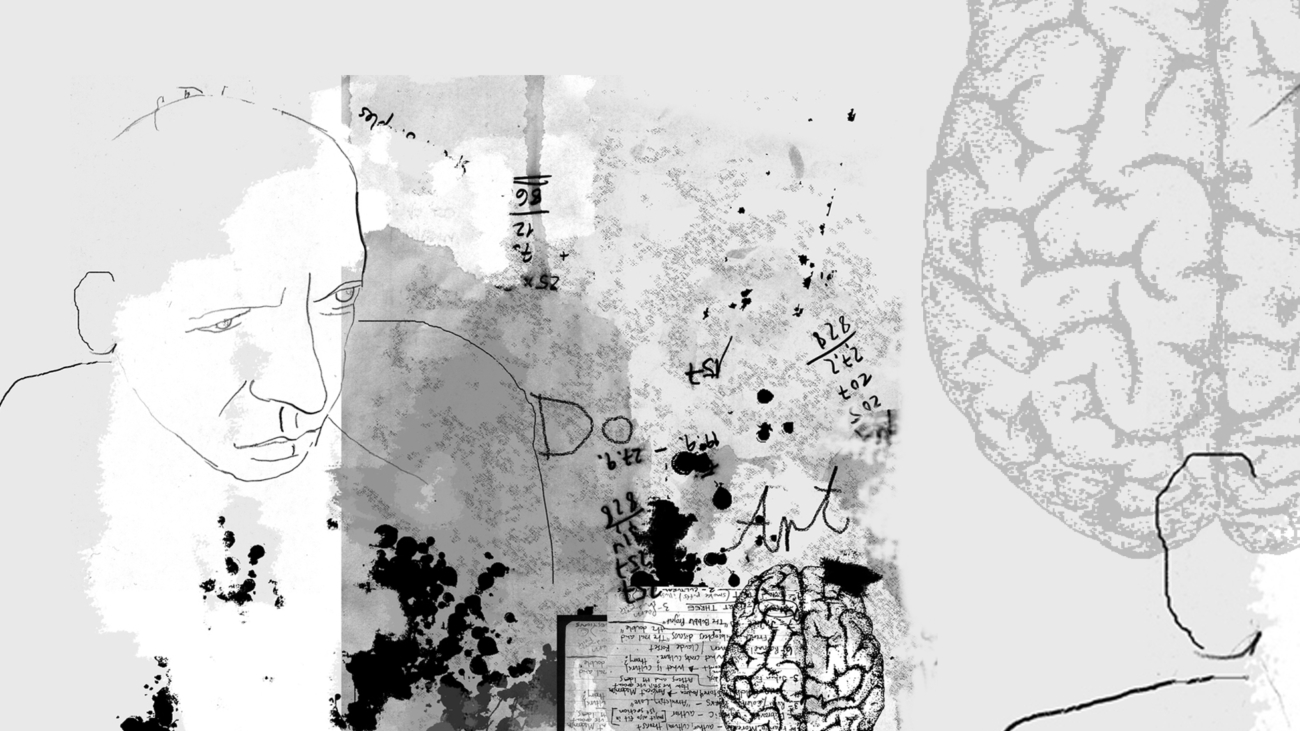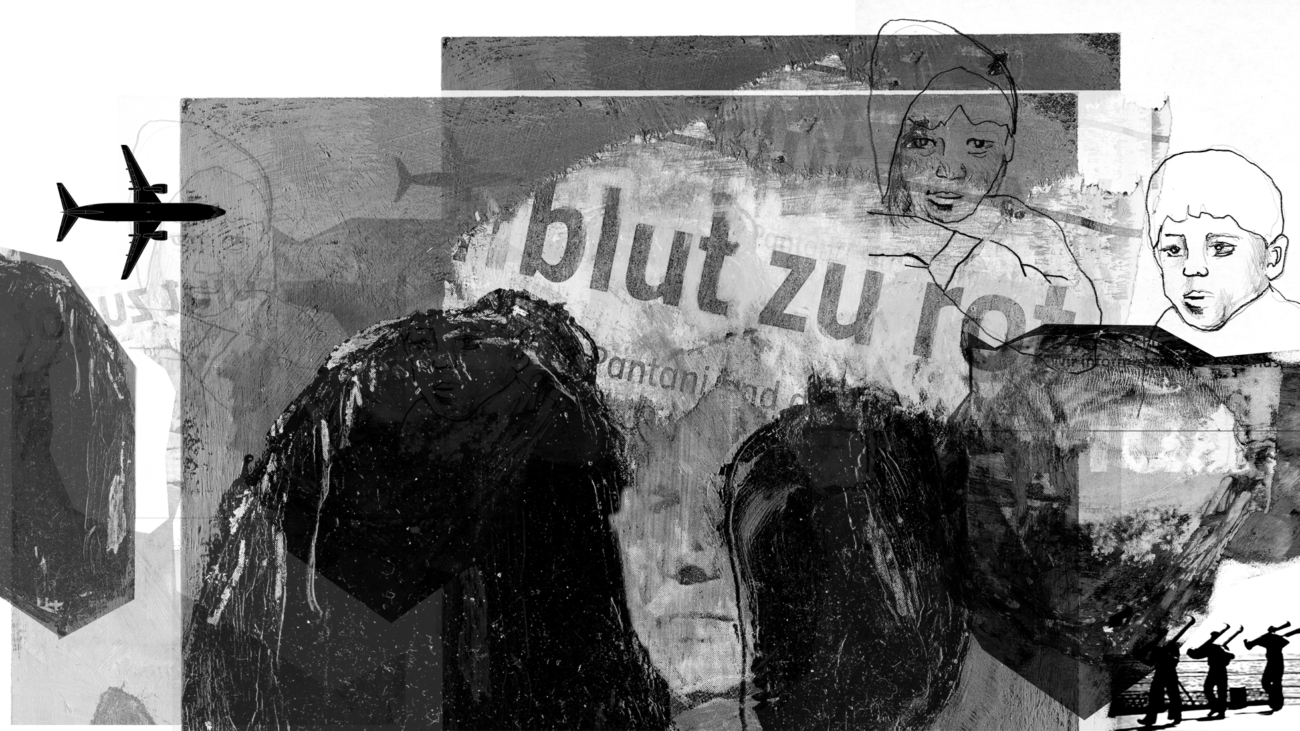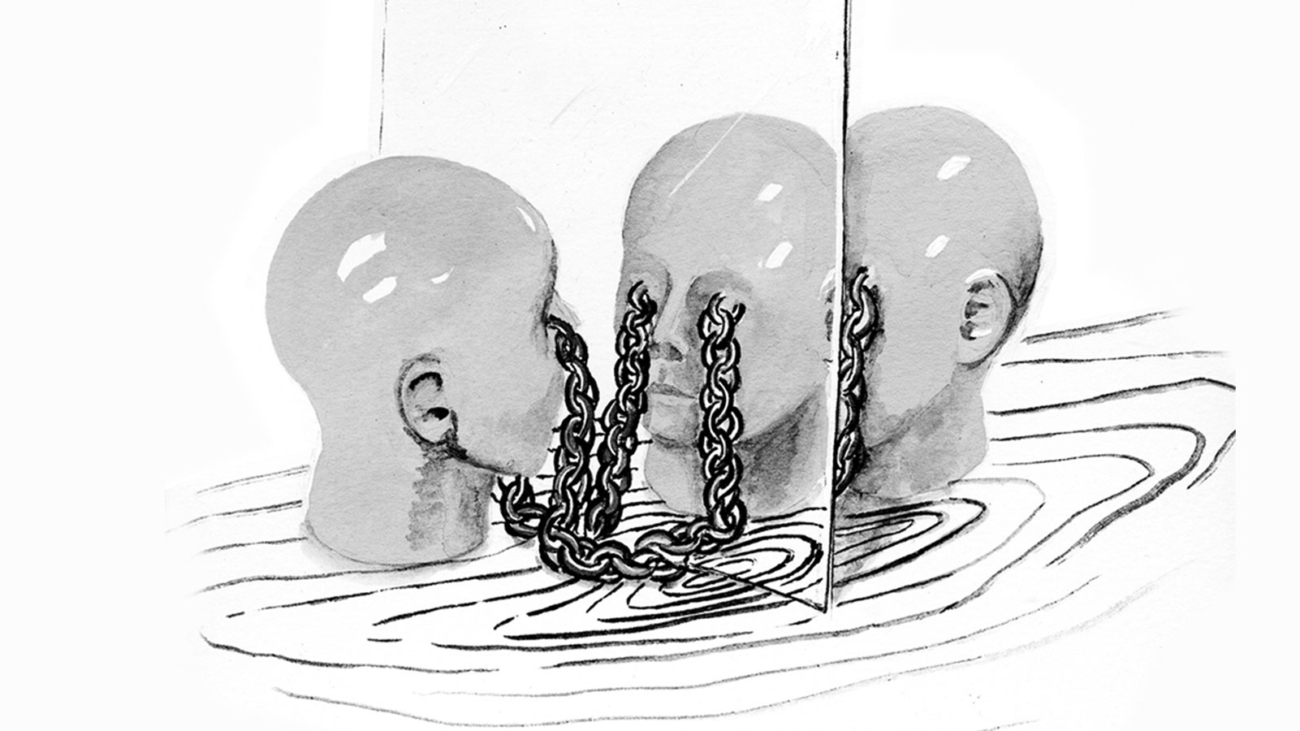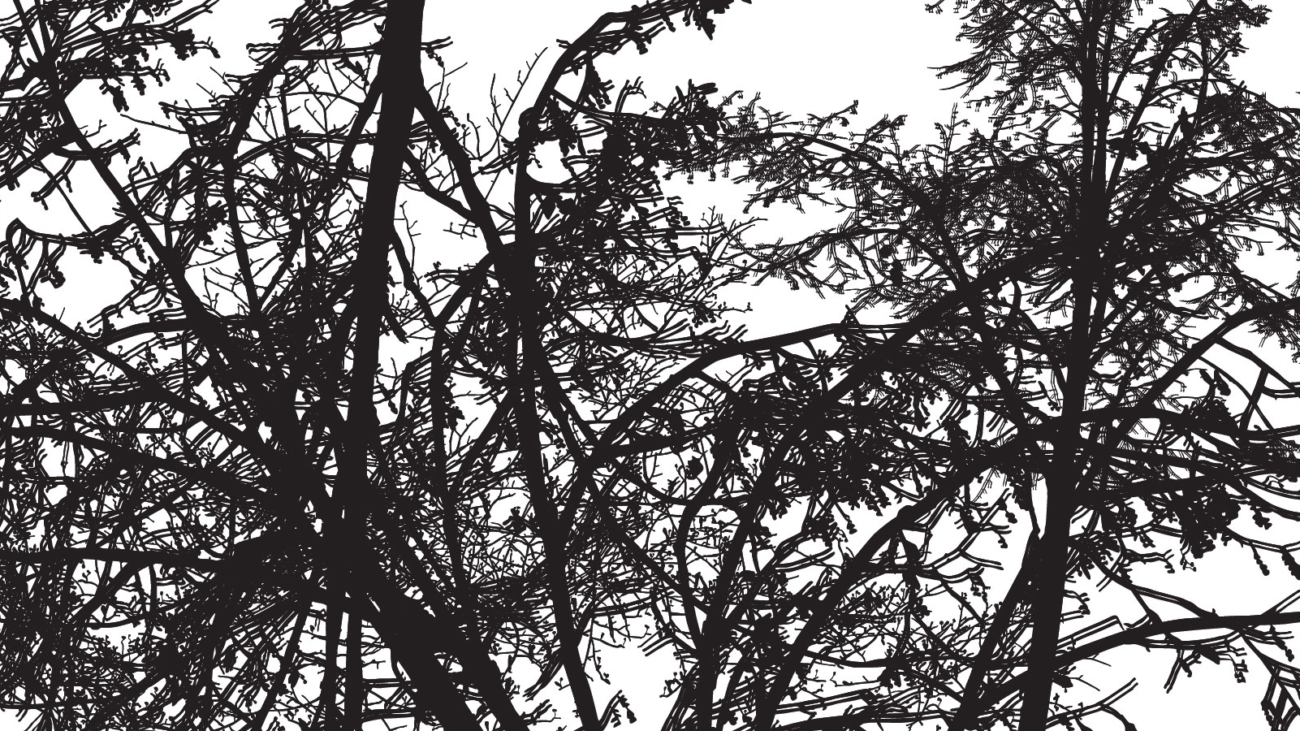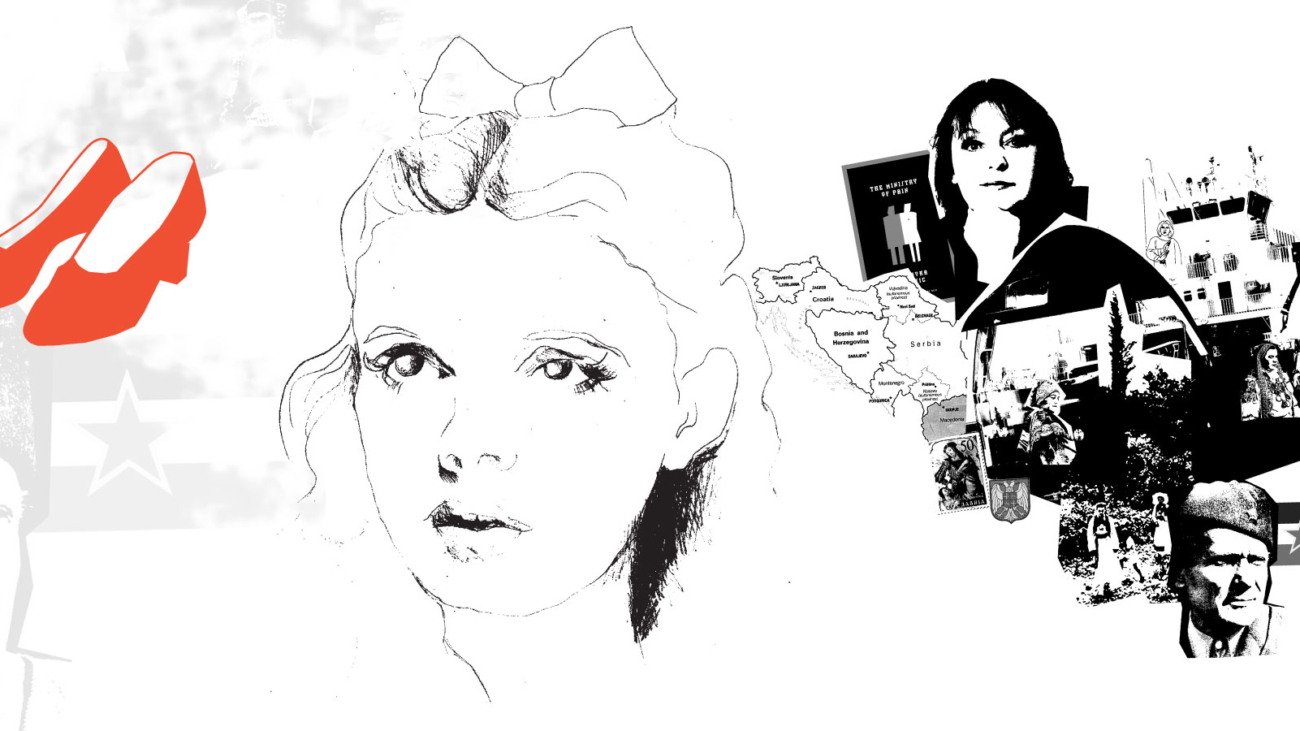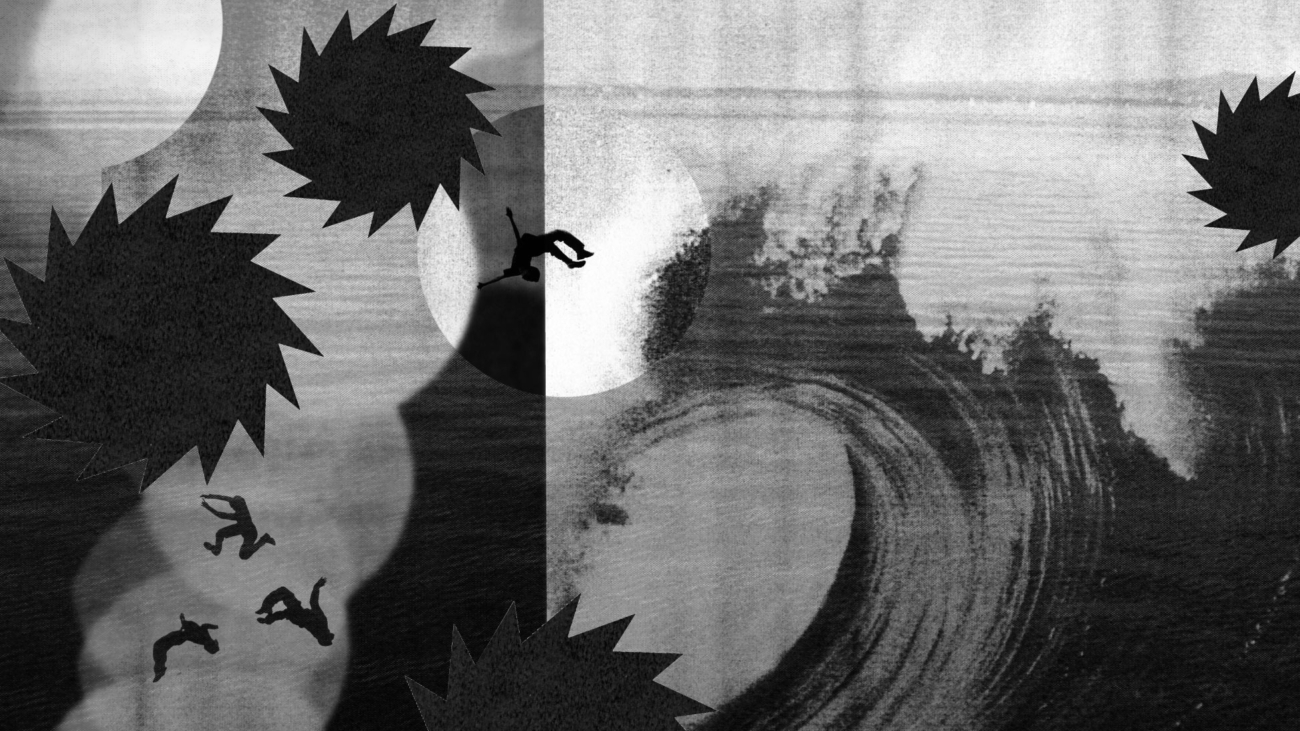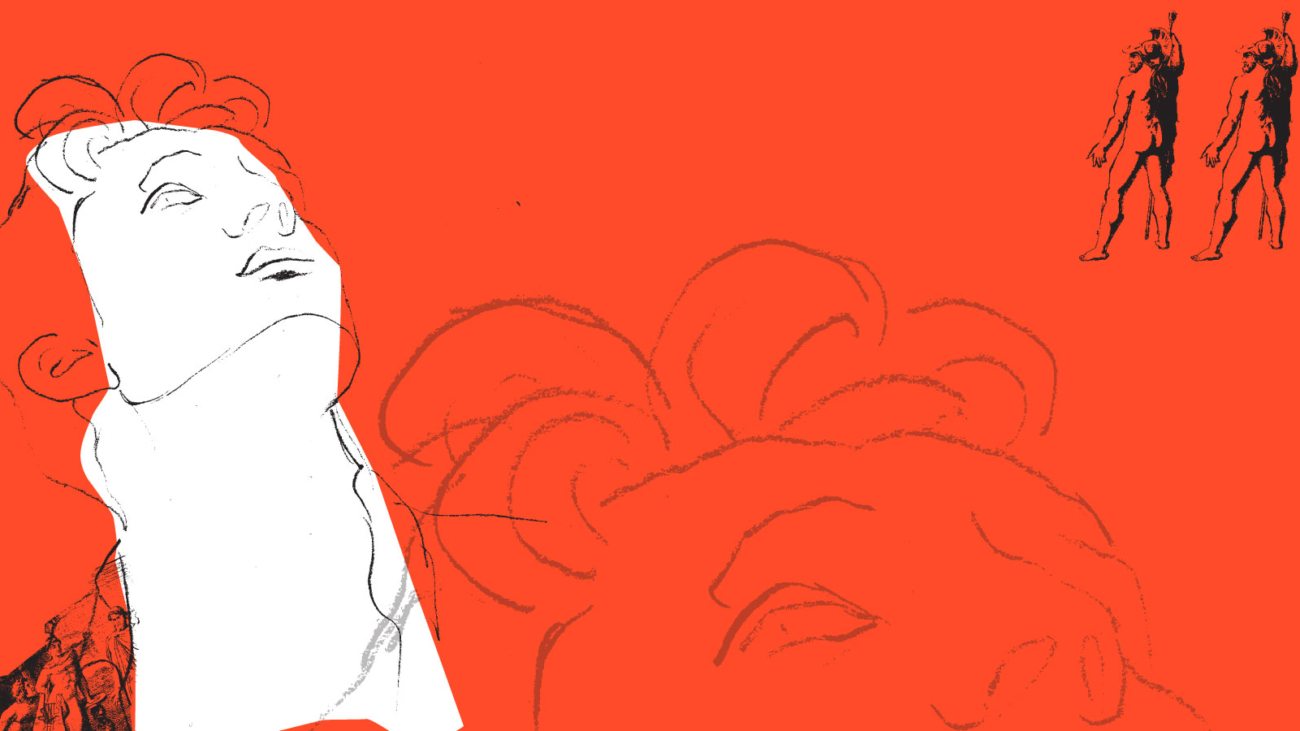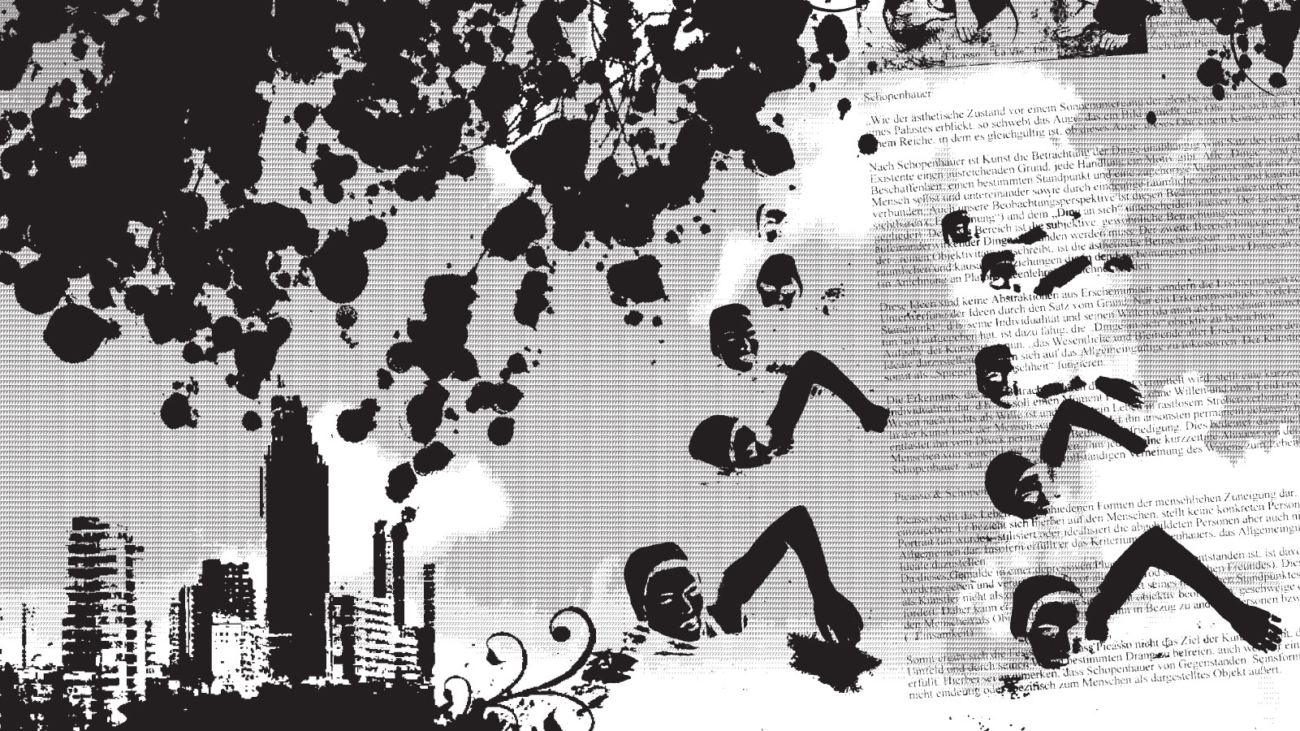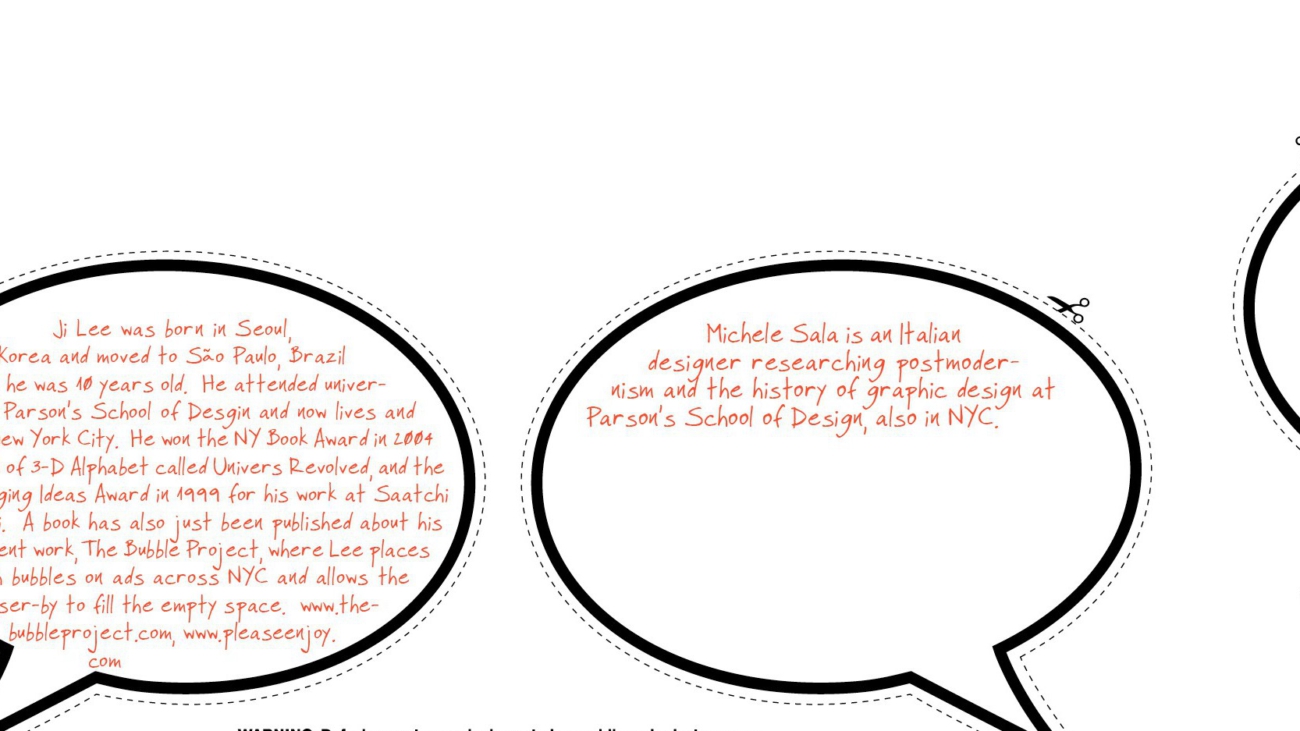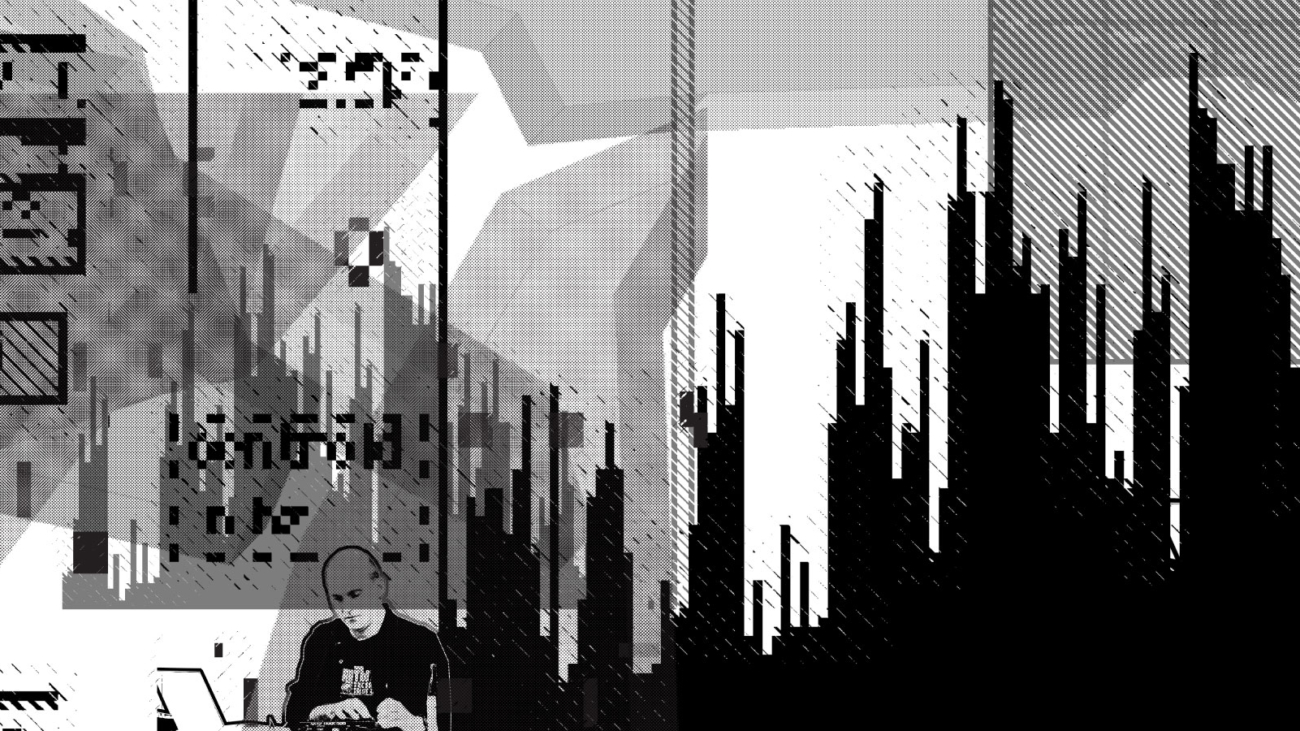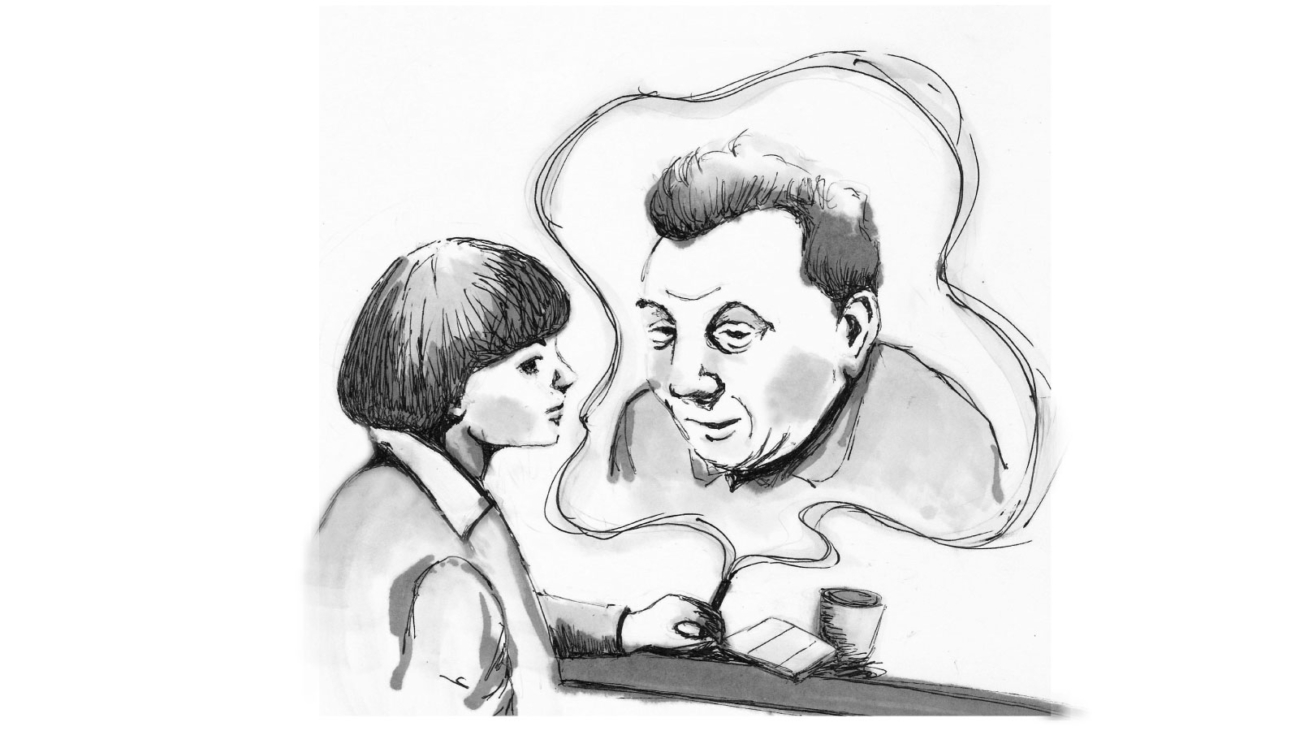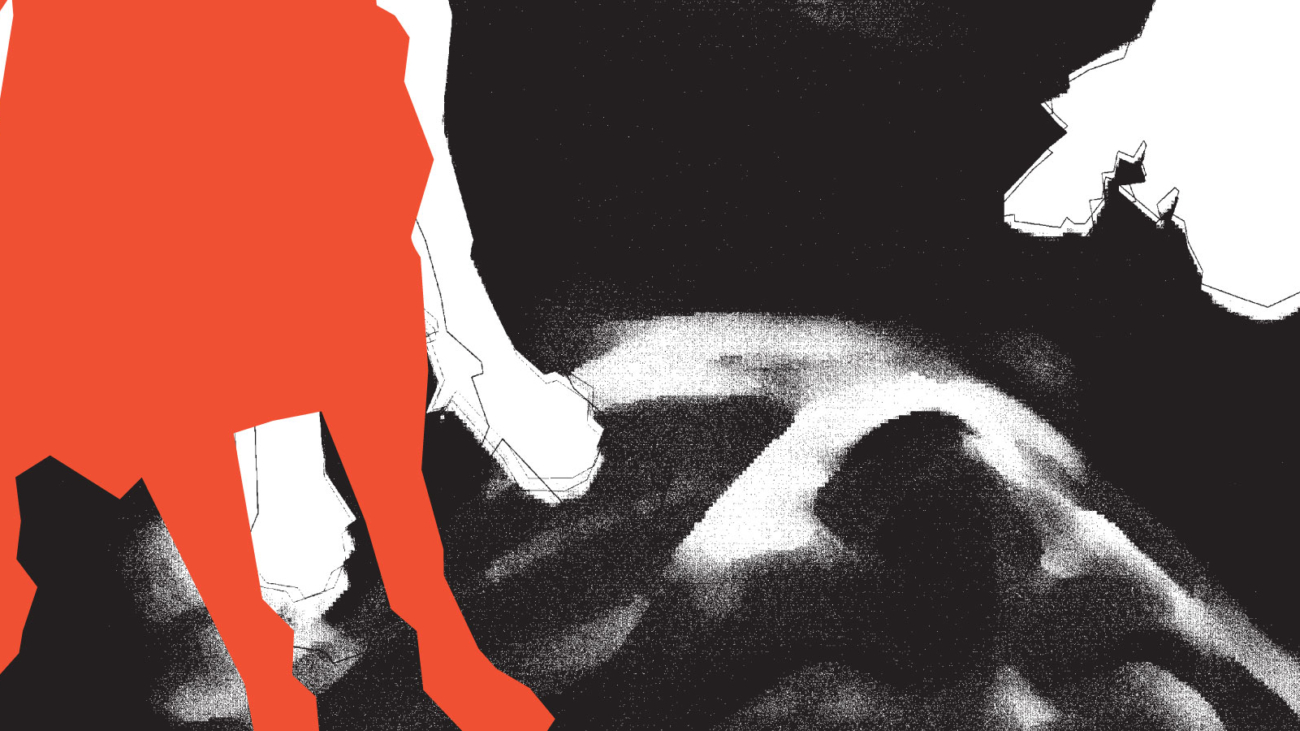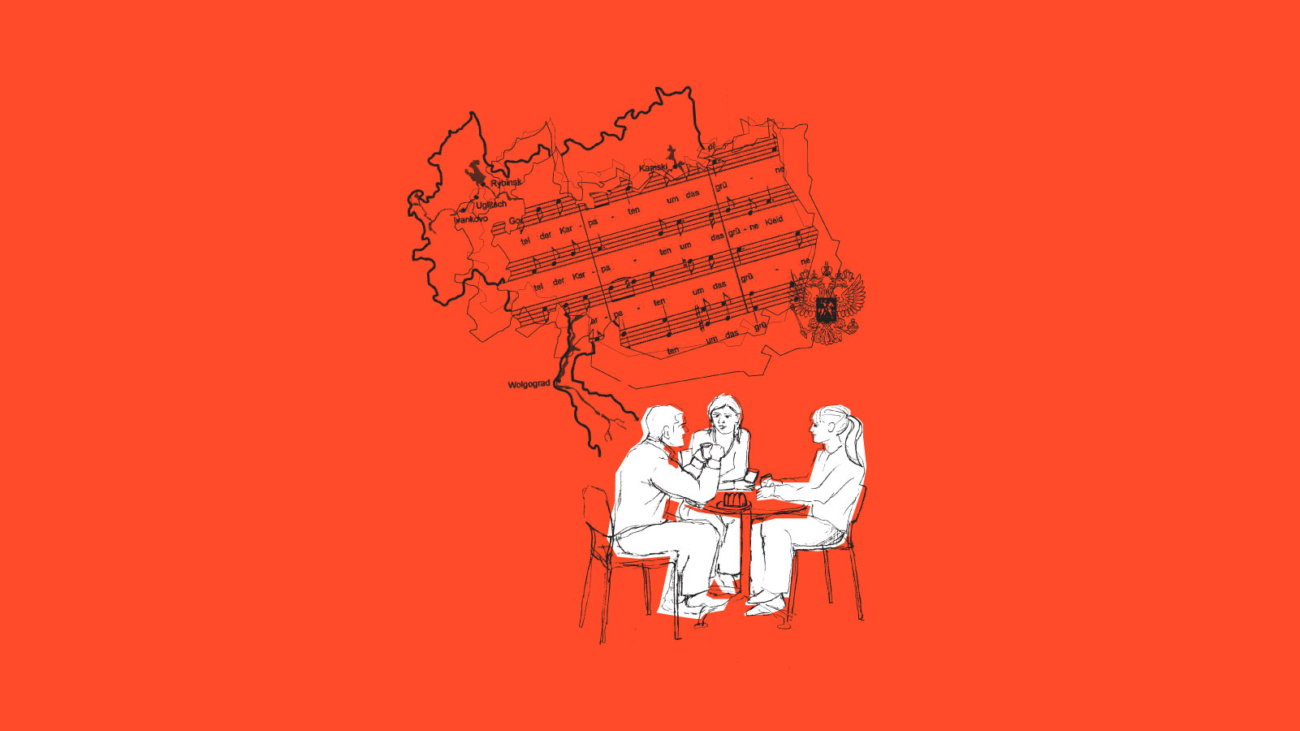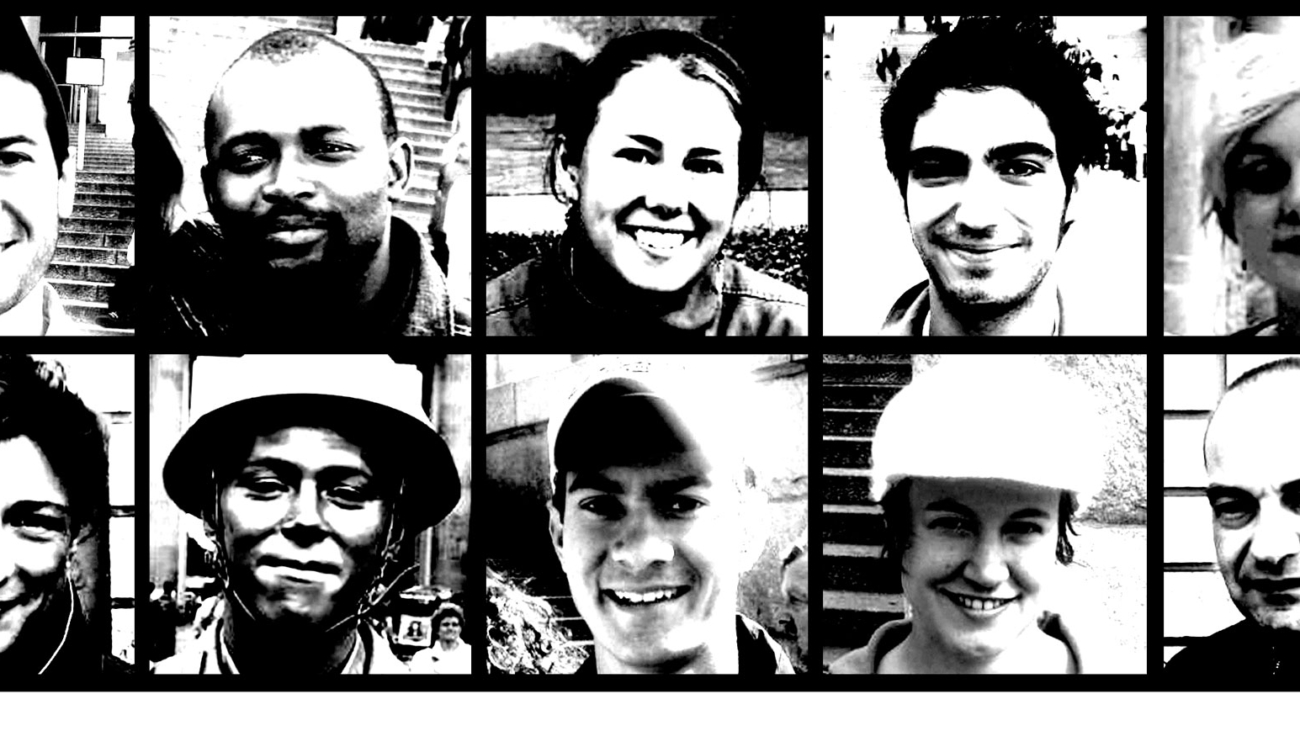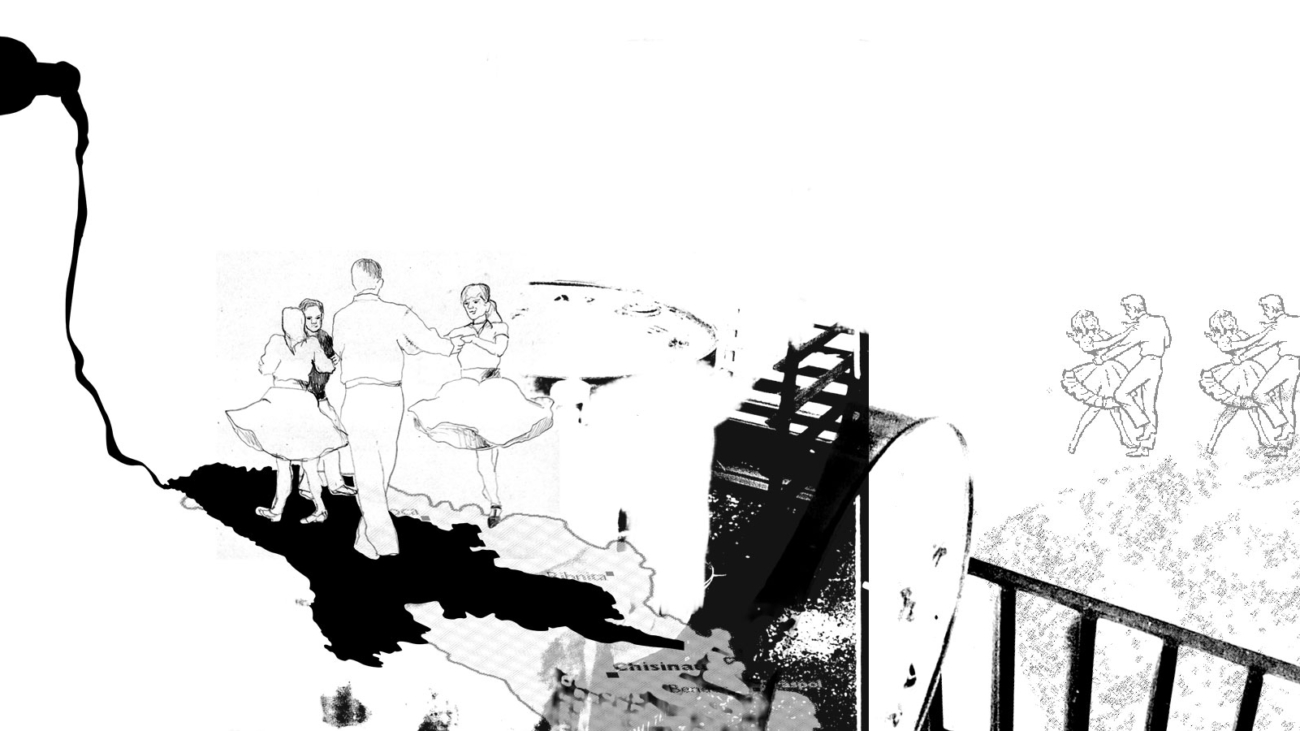From Godard to Bergson to Borges to Beckett to Pietroiusti, and then back to Bergson again – Eivind Nesterud collects images and inspirations in a montage that becomes its own form of art.
Artwork by Claire Davis.
Vivre Sa Vie (1962) by Jean Luc Godard, is a movie divided into 12 chapters. In the 11th chapter the main character Nana, played by Anna Karena, is introduced as “the unwitting philosopher”. Brice Parain in the role of himself, is introduced as “the philosopher”. The 11th chapter goes something like this:
Nana in a café.
She asks Parain to buy her a drink.
Nana sits down with Parain, then she says that she suddenly does not know what to say.
Parain asks if she has read The Three Musketeers. She has not. So he tells her this story about one of the musketeers, from the book Twenty Five Years Later. Porthos, one of the musketeers, is going to blow up a building. He has placed a bomb in the cellar and ignites it. He starts to run away, but then he stops, and starts to think; “How is it possible to put one foot in front of another?” This thought paralyses him. The bomb explodes and the building falls over him, but he is very strong, so he is able to hold up the building all through the next the day. Then he cannot hold it up anymore and the building crushes him. Nana asks why he told her this story. “No reason, just to talk” he replies. Nana thinks The Three Musketeers story is beautiful. She says that it is also frightening. Parain replies: “It’s frightening but it gives a clue. We are only able to speak well after we renounce living for a while. It’s the price we pay”.
Parain: Speaking is a sort of resurrection and life with speech is different from life without
it. So, to live with words you must go through the death of life without them. I don’t know
if I’m explaining myself … there’s an asceticism, which means that you can only speak well
when you look at life with detachment.
Nana: But you can’t live everyday life with, I don’t know, with …
Parain: With detachment? That’s why we swing between silence and speech. We swing between
the two because life is such that we go from everyday life into another life which is much higher
because it’s a thinking life. But this thinking life involves the killing of life that is too mundane.
Brice Parain was a linguistic philosopher, he wrote a book called Researches into the Nature and Function
of Language (1942) he also wrote a play called Black on White, produced in 1962, from which he
quotes, in his discussion with Nana, ‘We haven’t yet found the means to live without speaking’. Jean
Luc Godard invited him to answer questions in Vivre Sa Vie because he had “a crisis of language.” It
is nice that Godard decided to film Brice Parain answering questions about language in
such a direct way. Instead of filming it, I am sure Godard could have just asked Parain if he could buy him a drink and they could have discussed his “crisis” and left it at that.
Brice Parain was twenty years old in 1917. Maybe he went to some lectures by Henri Bergson. During a studio visit not so long ago I learned that James Joyce and T.S Eliot used to go and listen to Bergson.
I mention Bergson because I am going to quote him later.
If I met Brice Parain in a café, first I would sit down at his table. Then I would say to him: “A lot of things are difficult Brice”, he would reply, “Yes, I know Eivind, it’s hard work.” Samuel Beckett would be there too, but he would not be seated at our table. He would be sitting at a table close by, and he would say: “Ever tried. Ever failed. No matter. Try again. Fail again. Fail better.” And on the second fl oor of this café, there would be a gallery. In this gallery there would be a work by Bas Jan Ader. A wall text: “Thoughts Unsaid Then Forgotten”, and the room would be dark except for some flowers in a vase by the floor.
Enough of this.
I want to do a work about piano tuning. I would like to see a piano being tuned. I guess art is a good excuse to learn about a lot of different stuff. I will probably not learn how to tune a piano, so right now I just want to see a piano being tuned. I wonder how long it takes to tune a piano? For all I know maybe piano tuners compete between themselves, in very murky clubs, and to get into these clubs you need a very specially pitched tuning fork that was made in a small village somewhere. You would strike the tuning fork against your hand, because striking the tuning fork against a hard surface can damage it. Then you would put the vibrating tuning fork against the door, and then the doorman would let you in. If there is a Piano Tuning World Championship, count me in. I’ll be there on the very first row. I do not guess that art is a good excuse to learn about a lot of stuff, I think it is. But I do not like the word “excuse”… can I say “means”? I am finding it a bit hard to write this text. That’s what I like about chapter 11 in Vivre Sa Vie, the difficulties of putting one foot in front of the other.
Swinging between silence and speech.
To and fro.
In the book Seven Nights by Jorge Luis Borges, he says that Bradley said “one of the effects of poetry is that it gives us the impression not of discovering something new, but of remembering something we have forgotten.”
A chuckle.
With movies I really enjoy, I often want to quote from them or imitate scenes or phrases. And I know that if I am feeling a bit down, any movie that Bill Murray is in will make me feel better. I only know one phrase by heart, from a movie Bill Murray is in: “Swamp leaches everyone! Check for swamp leaches! Nobody else got hit. Am I the only one who got hit? What’s the deal?” That quote is from The Life Aquatic With Steve Zissou, directed by Wes Anderson (2004). Some artworks I want to do or repeat, not very seriously, just for my own amusement. But amusement is pretty serious. And by repeating I don’t mean that I get interior decoration ideas from Dan Flavin. I will give an example, I promise. I once wanted a bed designed by Donald Judd because I once saw and sat in one. It was not an original; it was a copy. I thought it was nice. I don’t want a Judd bed anymore. I think at the time I did not want the bed so much as the person sitting next to me in it.
Here is my example:
I am now going to do a performance. I am not in the mood for an audience or answering questions,
so I shall have to leave this room where I am sitting right now. I will attempt to repeat an action and
to teach myself a manual skill. Adieu, but I will be back.
Hello. This was my little hallway performance: I removed my jumper without taking off my dark blue
duffel coat. It was quite difficult, but I managed to do it in about 3 minutes.
In the work Practical Skills by Cesare Pietroiusti (2002), anyone who wanted to could teach something to the artist, a manual skill, or something using one’s hands. Each lesson was only to be received once and was to last for the duration of one hour. In return, the people who taught Cesare Pietroiusti something would receive a lesson from him taken from a previously compiled list of his manual skills. He received eighteen lessons. Here are some of the skills he was taught: Anne taught him to cut hair, Carolyn taught him to use Photoshop, Stacey taught him to transfer an image from a photocopy onto another surface, Josh taught him to play basketball and Evan taught him to remove his vest without taking off his overcoat.
I prefer to write short descriptive texts when writing about my own work. Like this:
Windmill work:
I bought a toy windmill in a shop, and placed it on a large plinth. It was installed close to an open window, whenever a rush of wind came through the open window, the windmill turned.
A Bench for Rooseum’s Turbine Hall:
There would be a bench, made of plywood or MDF or both, placed in the middle of Rooseum’s Turbine Hall. The dimensions of the bench would be determined by the dimensions of Rooseum’s ceiling tiles. The dimensions of the ceiling tiles are: 119cm x 119cm and 119cm x 89cm. Some of the ceiling tiles in the turbine hall would be taken down and placed against part of the bench, leaning like books on a shelf. The number of tiles taken down would also determine the dimensions of the bench. The bench can be viewed as a sculpture, as well as support for the displaced architectural elements, and as a watch station to sit and contemplate the space and other works of art.
Spaghetti thrown at a wall and sticking to it.
A video: “Satori in the Studio”.
In it I explain the concept of satori from Zen Buddhism. Satori literary means awakening. I demonstrate how one can reach satori through meditation and shock. Someone basically hits people while they are meditating. Although this is not exactly true. “The Master Administers the Keisaku, (awakening stick), which symbolizes the sudden awakening into enlightenment. During long periods of meditation, the mind may lose its sharpness and clarity; however, an expert slap with the keisaku brings the mind back into focus, paring concentration to a fi ne hone. Even the sound of a slap may help practitioners to awaken to their own true nature.” Wow.
“If poetry introduces the strange, it does so by means of the familiar. The poetic is the familiar dissolving into the strange, and ourselves with it. It never dispossesses us entirely, for the words, the images (once dissolved) are charged with emotions already experienced, attached to objects which link them to the known.”– Georges Bataille “The Inner Experience”.
The quote above makes me a bit dizzy.
An observation shared: Haiku poems often describe daily situations. At their best they can give the reader a new experience of a well-known situation. Being given a new view on a daily situation could perhaps result in a smile or even laughter.
Here is a haiku for you:
The first soft snow!
Enough to bend the leaves
Of the jonquil low.
–Matsuo Basho, (1644-1694)
Plug-hat.
The book Laughter: An Essay on the Meaning of the Comic by Henri Bergson, published by Green
Integer, is a small book and it fits very well into the back pocket of my jeans. On the cover there’s a picture of Bergson. He is wearing a hat, but the picture is cropped so you can only see the brim of the hat. I found the whole picture on the Internet. Bergson is wearing a bowler hat.
Bergson quote: “You may laugh at a hat, but what you are making fun of, in this case, is not the piece of felt or straw, but the shape men have given it, the human caprice whose mold it has assumed.” An object altered or an experience tilted, something strangely familiar. I dreamt about the short story The Congress by Jorge Luis Borges last night. I cannot really say that The Congress of The World haunted me in my sleep, because it wasn’t a nightmare. That would have been nice though. The dream was more about how to explain why I want to have it in this text.
The Congress of The World:
The Congress is a about a group of people who meet in a café in Buenos Aires every Saturday. It is a kind of club, and they call this club The Congress. Their aim is to be The Congress of the whole world. It is a difficult and expensive endeavor. Some of the members travel to Europe to do research. Ferri, the narrator in the story, travels to London, where he falls in love and stays much longer than he is supposed to stay.
One member in The Congress suggests that for their library, they need the classical works of all nations and all languages. For example, they order thirty-four hundred copies of Don Quixote in different editions. They also order bound volumes of the daily press, old account books, Chinese Encyclopedias and the atlases of Justus Perthes. During a meeting it is suggested that the president of the congress, don Alejandro Glencoe “might represent not only cattlemen but also Uruguayans, and also humanity’s great forerunners, and also men with red beards, and also those seated in armchairs.” Nora Erfjord was the secretary of The Congress and the only one who received a salary. She was a full time employee and her workload was staggering. All the other members had day jobs. Nora Erfjord was also Norwegian. “Would she represent secretaries, Norwegian womanhood, or more obviously – all beautiful women?” and “Would a single engineer be enough to represent all engineers – including all those from New Zealand?”
They spend a lot of money. The president of The Congress is the one providing the money. He has to sell all his property to fi nance the expenses. In the end, they decide to call the whole thing off. It is not really all of them that decide; it is the president. They burn the enormous book collection they have gathered, and that night they go for a tour of the city. They are like undeveloped photographs and the city that night is the place where they will be processed. Every impression of that night is etched into their memory – “a couple of men dancing together at a right-angled street, a church yard with black and white tiles and a grilled iron fence.” The Congress lasted for about 4 years, and then it ended with a tour of a city. Their last night together and its impressions was
the fruit of their labor.
Now I do not think this part about “The Congress” is very clear, not crystal, I have not yet managed to explain why I want it in this text. Could I say that each impression that night was like a keisaku stick, hitting the narrator? I’d like to see keisaku sticks, and I would like to make some of them too. To be a revealing agent. “It seems as though the comic could not produce its disturbing effect unless it fell, so to say, on the surface of a soul that is thoroughly calm and unruffled.” Or, to put it in other words, a soul that is detached for a moment, an onlooker instead of a partaker. Then one brings back what one saw or learned from one’s position as onlooker, and partakes again. Back and forth.
Try to go for:
“A search for the enrichment of our perceptive assumptions” To be a pebble in someone’s shoe or the hair in someone’s soup, or a quick kiss on someone’s cheek. It is a matter of logistics, the planning and implementation of a complex task. I will say micro-logistics Bergson on art: “What is the aim of art if not to show us, in nature and in the mind, outside us and inside us, things which did not explicitly strike our senses and consiousness?”
Notes:
* “At that point I felt an importunate tap, almost a punch, on my upper arm, from Charles’s direction. I turned to him. He was sitting in a fairly normal position on his chair now, except that he had one knee tucked under him ‘What did one wall say to the other wall?’ he asked shrilly. ‘It’s a riddle!’ J.D Salinger, For Esmé – With Love and Squalor and other stories, Penguin Books, London, 1994.
* Thich Thien-An, Zen Philosophy, Zen Practice, Dharma Publishing, Los Angeles, 1975.
* Henri Bergson, Laughter – An Essay on the Meaning of the Comic, Green Integer, Los Angeles, 1999.

